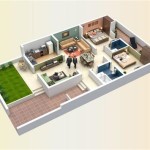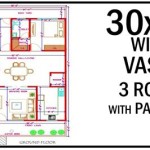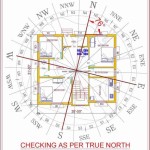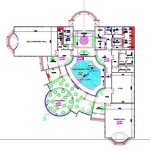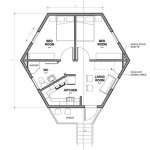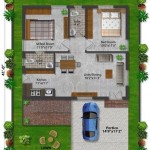House Plan Standard Dimensions: A Guide to Essential Room Sizes
When designing a house, it's essential to consider the standard dimensions for various rooms to ensure functionality and comfort. These established guidelines provide a framework for architects and builders to create well-proportioned and liveable spaces. In this article, we'll delve into the essential dimensions for different rooms in a typical house.
Living Room
The living room is the central gathering space, and its dimensions should accommodate the desired furniture layout and activities. Ideal dimensions for a living room range from 16' x 18' to 20' x 24', allowing for ample seating, entertainment systems, and traffic flow.
Dining Room
The dining room typically houses a table and chairs for meals. Standard dimensions range from 10' x 12' to 12' x 14'. Consider the size of the table and the number of chairs required to determine the appropriate dimensions.
Kitchen
The kitchen is the heart of the home, and its dimensions should accommodate cooking, storage, and dining. Ideal kitchen dimensions range from 10' x 10' to 12' x 14'. Allow for sufficient work surfaces, appliances, and a small dining area if desired.
Master Bedroom
The master bedroom should offer privacy and comfort. Standard dimensions range from 12' x 12' to 14' x 16'. Allow for a bed, nightstands, dresser, and a sitting area or study space.
Other Bedrooms
Secondary bedrooms typically require less space than the master bedroom. Ideal dimensions for other bedrooms range from 10' x 10' to 12' x 12'. Consider the size of the beds and any other furniture that needs to be accommodated.
Bathrooms
Bathrooms should be functional and well-proportioned. Standard dimensions for a full bathroom range from 5' x 7' to 8' x 8'. Allow for a toilet, sink, tub, shower, and storage. Half bathrooms typically measure around 3' x 5' and include a toilet and sink.
Closets
Closets provide essential storage space. Standard dimensions for a walk-in closet range from 5' x 5' to 10' x 12', allowing for hanging clothes, shelves, and drawers. Reach-in closets typically measure around 2' x 4' to 3' x 6', accommodating hanging clothes on a single rod.
Additional Considerations
When determining room dimensions, consider the following factors:
- Furniture size and layout
- Traffic flow and circulation
- Natural light and ventilation
- Building codes and regulations
Remember, these standard dimensions provide a starting point. Consult with an architect or builder to determine the optimal dimensions for your specific needs and preferences.

12 Examples Of Floor Plans With Dimensions

How To Read A Floor Plan With Dimensions Houseplans Blog Com

A Floorplan Of Single Family House All Dimensions In Meters Scientific Diagram

How To Read A Floor Plan With Dimensions Houseplans Blog Com

12 Examples Of Floor Plans With Dimensions

Floor Plans With Dimensions Including Examples Cedreo

Tips For Creating Architectural Plans Ilrarch

Floor Plans With Dimensions Including Examples Cedreo

How To Read Floor Plans With Dimensions A Guide

Sample Floor Plan Image With The Specification Of Diffe Room Sizes Scientific Diagram

